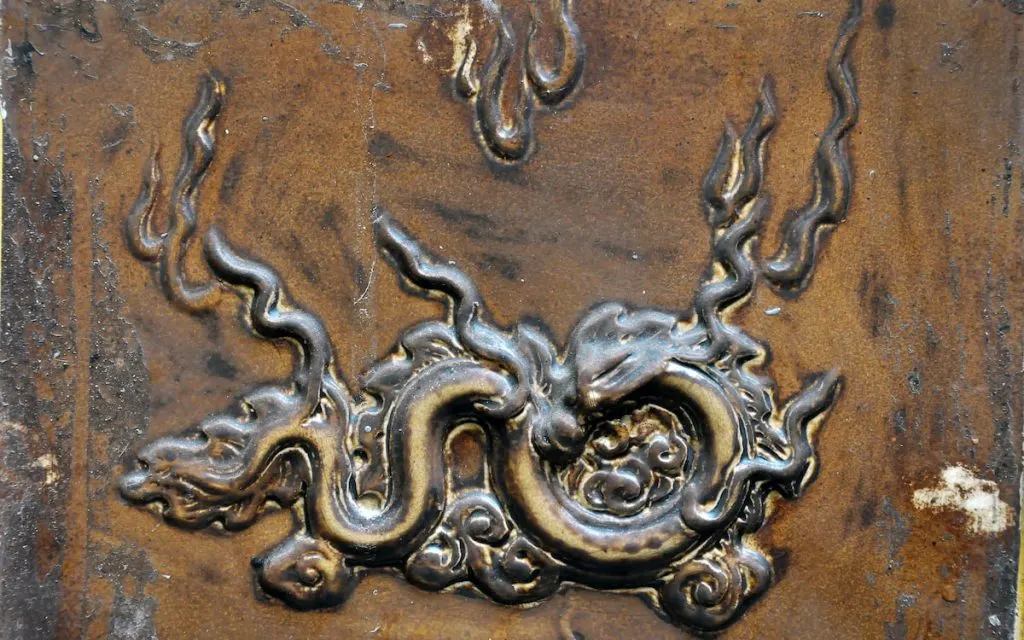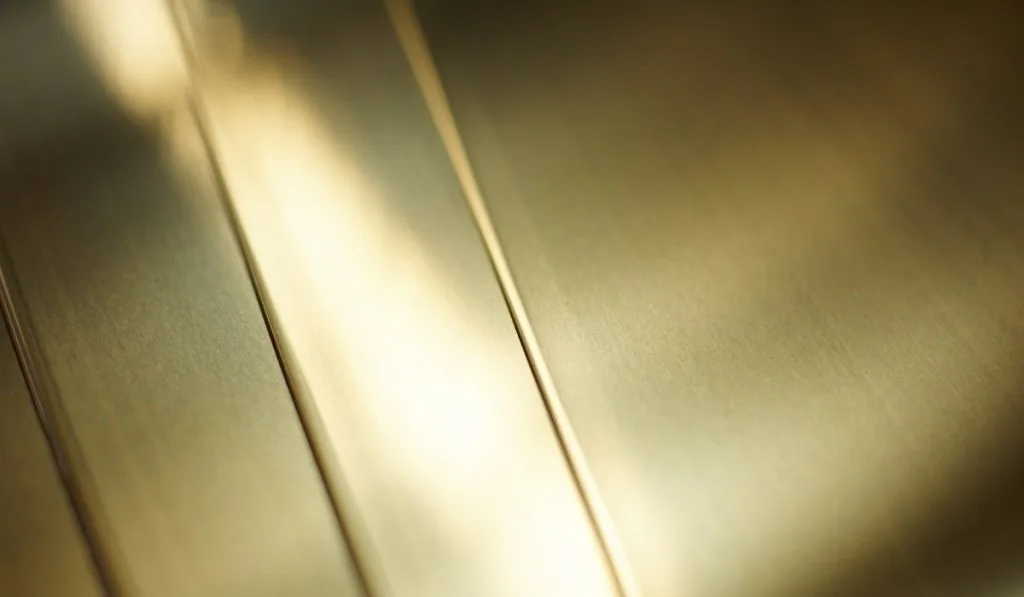You might have heard about the warm and cool-toned brass hardware that is the new trend in town and you feel you want to try out a piece in one of your living spaces. However, updating your spaces with brass finishings might get a little tricky. There are many types of brass finishes, and it can be hard to choose.
How do you decide on the best brass finish for you? This article will give you everything you need to know about brass finishes, and how you can incorporate them into your home.
What is a Brass Finish?
A brass finish is a metal coating applied to brass materials after buffing, giving the bare metal protection from oxidation that will cause subsequent corrosion of the metal.
Oxidation is a process where a metal, brass for this case, reacts with the oxygen in the air. The reaction creates a metal oxide, causing tarnish or a patina on the metal.
Brass is an alloy metal and due to its reactivity with air and moisture, it quickly oxidizes. However, thanks to the brass finishing on brass products, the materials can maintain their shape and form for a long time.
Brass is an alloy of both zinc and copper, although other trace metals are often added for extra resistance to wear and corrosion, and for better strength of the finished product.
6 Types of Brass Finishes
Which is the best brass finish to use for your spaces?
Well, depending on the style used to decorate your space, finding the best brass finish to match your style should not be a big tussle. Here are the brass finishes you need to know.
1. Satin Brass Finish
A satin brass finish has a subtle yet bold, smooth matte finish, garnering its well-recognized popularity around the globe. Furthermore, it is warm, soft, and bright, and always complements any background setting.
Satin brass is often confused and used interchangeably with a brushed brass finish, but brushed brass is a completely different kind of finish. Taking a closer look to differentiate, the brushed finish is distinguished by the more visible brush marking on the coating. Satin brass, however, has a smooth and soft coating that clearly shows the natural tone of brass within.
Once done, a satin brass finish is both tarnish and rust-resistant and doesn’t show any water spots or hold fingerprint marks on the piece.
However, not all satin brass finishings are done the same, because different producers have a wide range of variations of the coating intensity for different collections. If you want your finishing done uniformly, therefore, you should use items from the same supplier or collection.
Upon completion, satin brass pieces are often glossed over with a topcoat, also called a lacquer, that helps maintain the beautiful finish for a lengthy period, and does not patina. If you want this added advantage, always ask your supplier if the products are lacquered.
Satin brass finishing is widely applied in residential homes to highlight contemporary pieces alongside the classical pieces. If you are bold enough to try it out, get creative with the finish. There are no limits to the magic the finishing can do to your space.
When cleaning it, only wipe with a soft cloth. The brass finish doesn’t need soap, water, or any chemicals to clean it.
2. Antique Brass Finish

An antique brass finish is a brass coating that has been chemically treated to look aged. Similar to natural brass, the end product has a low-luster finish, but will not corrode or tarnish.
Typically, an antique brass finish has rich, deep, medium brown colors with golden undertones. Different manufacturers will have their products ranging in color intensity, so to ensure the right tones, always sample out the products in person before purchasing them.
To achieve the antique look, the coating has a chemical called ferric nitrate that primarily oxidizes the brass beneath. However, since the oxidization occurs in a controlled environment under a coating, with limited oxygen, the reaction stops at a certain degree to give the brass the desired finish.
Making your own antique brass pieces at home could be fun and even save you some cash. However, you will have to use vinegar instead of ferric nitrate.
Just clean your brass piece and put it in the oven under low heat for a few minutes till it’s moderately warm, but not too hot for you to touch. Remove it from the oven and brush vinegar over it to get the desired antique finish. You might not instantly get the level of finish you want for your piece, and in this case, keep adding and brushing the vinegar till you are satisfied.
The antique brass finishes are the best fit for vintage-styled spaces like the colonial or Victorian styles. They are also a popular choice for people who want less reflective surfaces in the house for that warm look, and those who want their new pieces to match the older pieces of brass within the desired space.
3. Burnished Brass Finish
A burnished brass finish is a warm, polished, and textured finish that leaves the golden brown color of brass shining elegantly through. The finish is shiny, but not reflective. Depending on the technique used to burnish the brass material, your brass piece may continue to patina over time.
Pieces with a burnished brass finish are compatible with both the traditional and contemporary designs, and can be used as stand-alone pieces or are beautifully merged with other pieces of different materials. This finish is common for light fixtures and even door handles.
4. Brushed Brass Finish

A brushed brass finish is a modern finish with a bright, warm look that can easily make a statement without looking too flashy. This explains the vast popularity the brushed brass finish has earned around the world.
Brushed brass finishes always have distinctive brush markings on the finished surface that could be random markings or are applied in a fine grain pattern, making the piece appear as if the surface was wiped with steel wool.
This finish type is durable, making it popular for a wide range of applications such as in lighting fixtures and door handles, both domestically and commercially.
5. Polished Brass Finish
A polished brass finish is a bright, shiny, reflective polish attained basically by polishing solid brass and coating it to prevent patina and tarnishing with age. However, other metals, not necessarily brass, can at times be electroplated and lacquered, resulting in a beautiful finish that is often rebranded as “polished brass”.
Thanks to the shiny attribute, a polished brass finish is highly visible and easy to clean, although with a higher probability of leaving water spots and fingerprints besides being more susceptible to damage compared to other finish types.
The resulting shine due to the lacquer is priceless and classic, making the polished finish a favorite for traditional settings, especially for lighting fixtures, cabinet and door hardware, and decorative items.
6. Weathered Brass Finish
Just like with an antique brass finishing, a weathered brass finish is attained by treating and aging the brass metal through oxidation for the desired look. However, weathered brass finishing is lighter in color compared to antique brass finishing, making it visually captivating.
Weathered brass finishes do not show any water spots, and neither do they leave any fingerprint marks nor scratches and easily damage. For this, they are a favorite for vintage spaces and steampunk rooms.
Conclusion
Every brass finish type has its own unique qualities making them suitable for a diverse range of applications and spaces. No matter the brass finishing that appeals to you the most, it is always recommended that you purchase your brass fixtures and other pieces from the same manufacturer to have a uniform look in your space. Have fun finding your most preferred brass finish.
Resources
- https://www.doityourself.com/stry/what-type-of-brass-finish-should-you-use
- https://www.qualitybath.com/discover/post/18737/were-all-about-that-brass-a-guide-to-brass-finishes
- https://www.rchhardware.com/blogs/decor/guide-to-understanding-metal-finishes
- https://www.forgehardwarestudio.com/blogs/news/what-is-the-difference-between-brass-finishes-in-cabinet-hardware-such-as-polished-brass-brushed-brass-and-satin-brass
- https://www.acmebrassplating.com/brass-finishes/
- https://www.elesi.com/blog/antique-brass-vs-polished-brass/
- https://www.pittella.com.au/material/satin-brass-2/
- http://rawurth.com/product/burnished-brass/
- https://averageinspired.com/2016/09/how-to-create-a-faux-antique-brass-finish-with-paint.html
